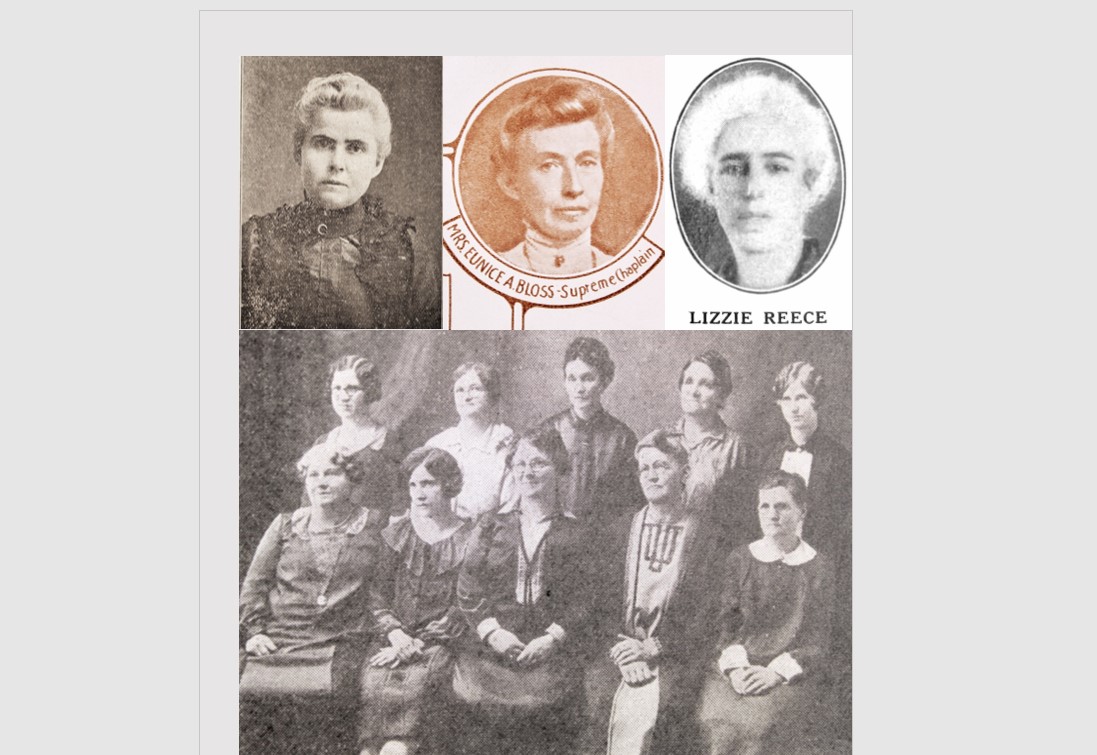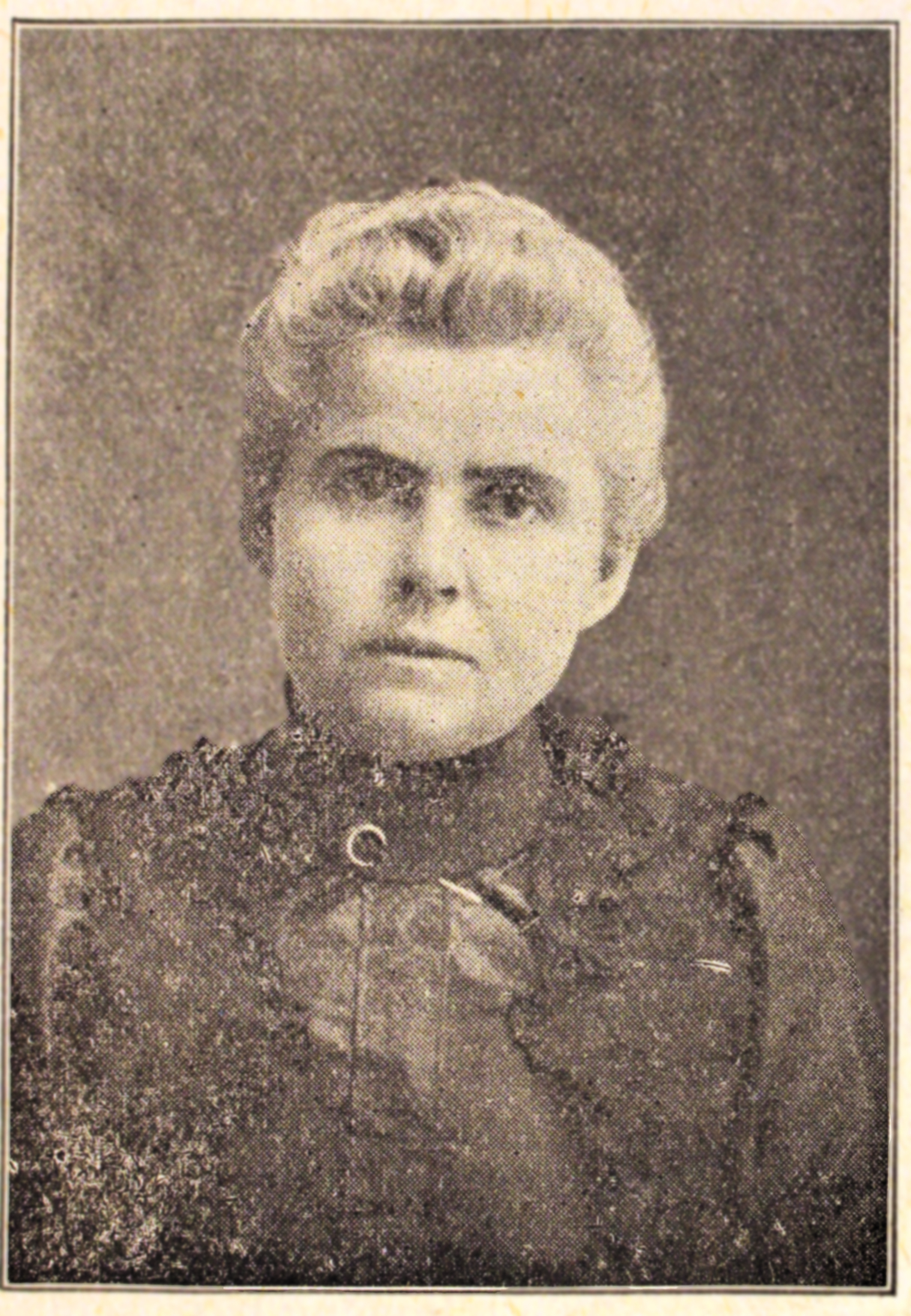
6 minute read
SOCIETY WOMEN: Tales of Trailblazers
Women played a key role in the Gleaner Society even before they gained national voting rights.
The Gleaner Society made sure its female members had equal voting rights when the Society incorporated in 1894 — a full 25 years before women were able to vote in U.S. elections. March was Women’s History Month, and several examples of trailblazing Gleaner women came to light from the Gleaner annals and other historical sources.
1. First female officer, Alice Mason
Seventy-five years ago, the first female officer in Gleaner history — and possibly the first woman elected to any fraternal society open to both men and women in Michigan — passed away in 1949. Alice M. (Benton) Mason of Grattan, Michigan, was elected Supreme Council Chaplain at the December 1901 Third Biennial Convention. “She was a member of the committee on laws at the meeting of the Supreme Arbor held in Lansing and the committee men gave her credit for being one of the best-informed members of the committee,” The Gleaner reported in a March 1902 profile. It continued with a letter from the Secretary of the new Cannon Arbor praising Mason for her “excellent work of installing the officers of Cannon Arbor, Jan. 16. Furthermore, that she accept our gratitude for the ne talk and instruction given, also the kind interest she and her worthy husband, who accompanied her, manifested in the good work of the Ancient Order of Gleaners.” Mason was married to Ezra Jay Mason, a Civil War veteran who was widely known in Michigan for the large dried-fruit business he operated for 26 years. The couple had two daughters and a son.

In 1904, the Mason family moved to Hagerman, New Mexico, and helped that city grow. Ezra bought and developed 120 acres. Alice wrote to the Society to step down as Chaplain after it became clear the family would stay in New Mexico: “I wish to thank the Supreme O cers as well as the whole Gleaner fraternity for the many honors conferred upon me in the past. We are all enjoying the very best of health and are in love with our new home. We have the best of neighbors and friends and nancially are doing well.” Ezra Mason passed away in 1918 (his death claim for $1,000 was paid in February 1919), while Alice lived until 1949.
The Supreme Council appointed Eunice A. Bloss of Crystal Arbor in Swartz Creek, Michigan, to finish Mason’s term. Bloss completed Mason’s term, then was elected Chaplain in her own right and served until 1910. The elections of Mason and Bloss began a trend. Gleaner’s first five Chaplains had all been men, but the position would be filled by women for the next nine decades until 1996. A succession format was adopted at that time, and Mark Wills became Chaplain.

It’s possible Alice Mason also was the first female officer for any Michigan fraternal benefit society open to both men and women.
Reece brings change to local courts

Lizzie Reece of Sweetser Arbor (IN) likely was Indiana’s longest-serving arbor Secretary prior to Pat Sutton’s half-century with Hawthorne Arbor. Lizzie Reece further deserves mention for a local change most of us take for granted — women serving on juries.
Lizzie Ellen Goff was born in 1885 in Grant County, Indiana, and became Sweetser Arbor’s Secretary in 1909. She married Aaron E. Reece Sr., and his death in 1932 left Lizzie a widow raising their teen son. In addition, Lizzie became the Assessor for Pleasant Township. In 1933, Reece ended up in a pay dispute with the Grant County councilmen, who were trying to equalize all assessing costs. Reece sued them, alleging she was deprived of her salary of $68 (equal to $1,546 in 2023 dollars). Prior to the trial, Reece and her attorney challenged Grant County’s longstanding practice of only calling men for jury service. The presiding judge agreed with Reece, requiring a second jury to be called. is also required remodeling of the 1880s-era courtroom facilities. “Because the jury quarters on the third floor of the courthouse are not suitable for women, only men have been drawn on the grand and petit jury panels, Alva Frazee, one of the jury commissioners, testified,” the Muncie Star Press reported. It added that renovations would probably cost several thousand dollars. The second trial was heard in 1936 by a jury composed of seven women and five men. Reece — by this time no longer serving as assessor — won her lawsuit. Reece continued to serve as Sweetser Secretary. She had 43 years of service and counting as of 1952, and likely served more years before the arbor became inactive in 1962. Reece passed away in 1971.

3. South Fairfield Arbor first with an all-female officer lineup
The women of South Fairfield Arbor (OH) have played a vital role in helping one of the oldest arbors in the Society. They also led the way in proving an arbor could be guided entirely by women — a trailblazing idea back in 1927. It was only seven years prior that American women had voted in their first presidential election.

South Fairfield’s women had shown determination long before. When funds ran out for their arbor hall construction in 1917, they formed a Ladies Aid group and donated $428 to the cause through sewing and baking to get the project finished. Women were elected to fill all the arbor’s leadership positions for 1927, and the same group continued the next year when they were spotlighted by the Society.










